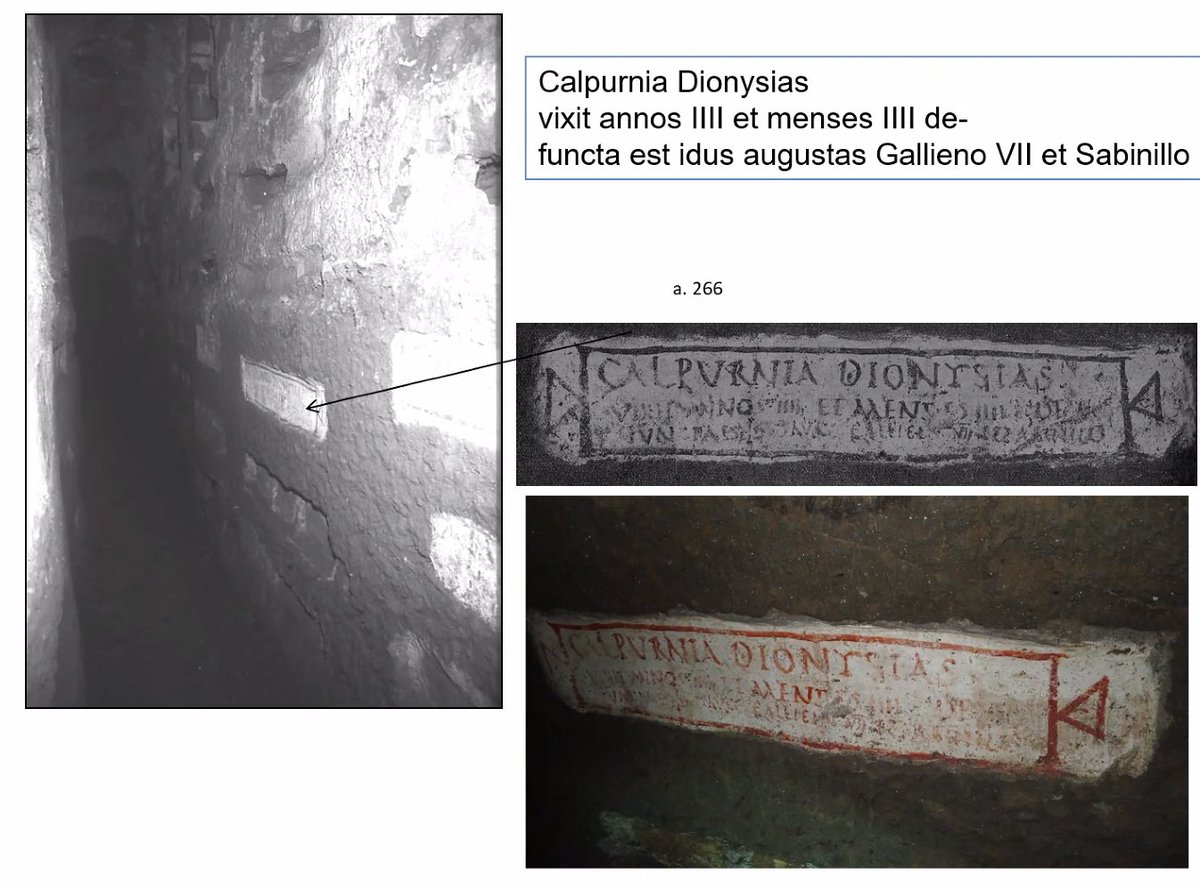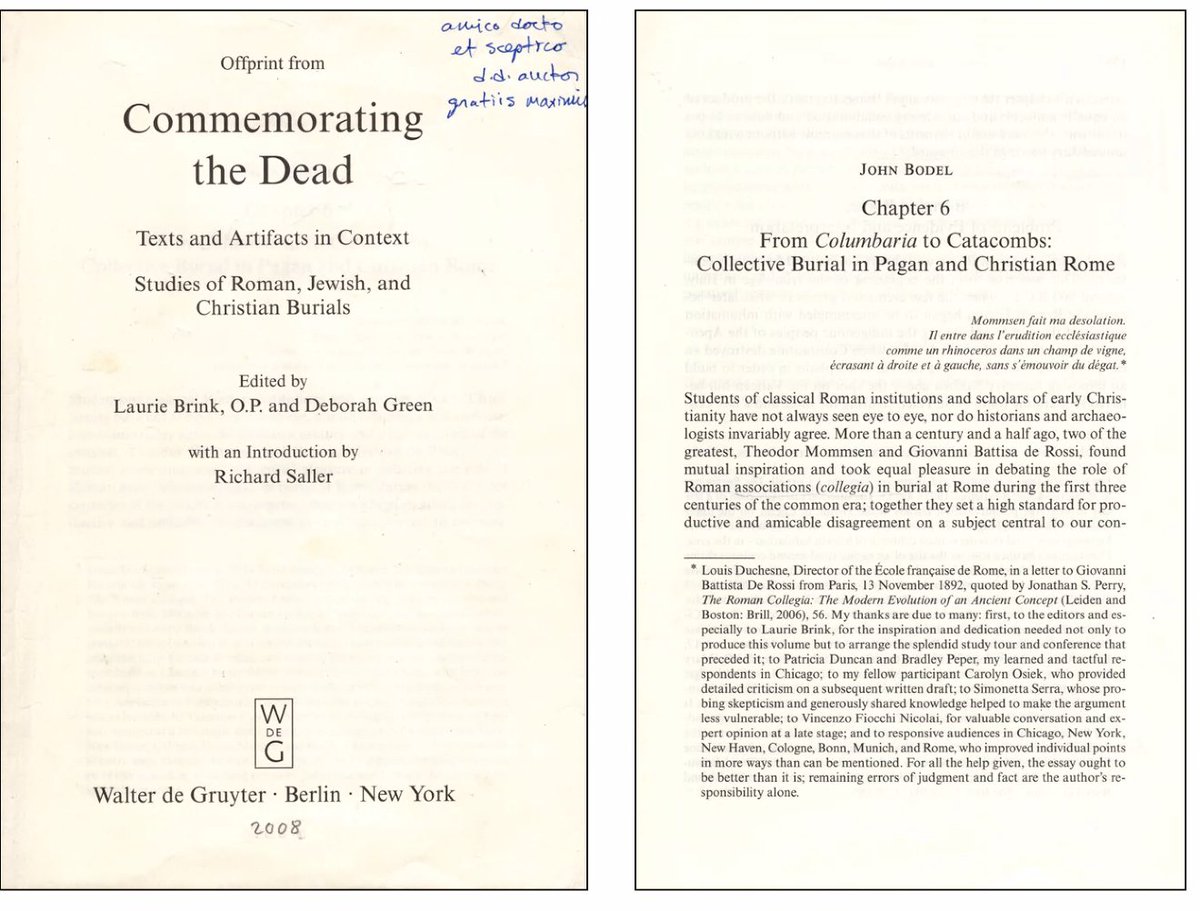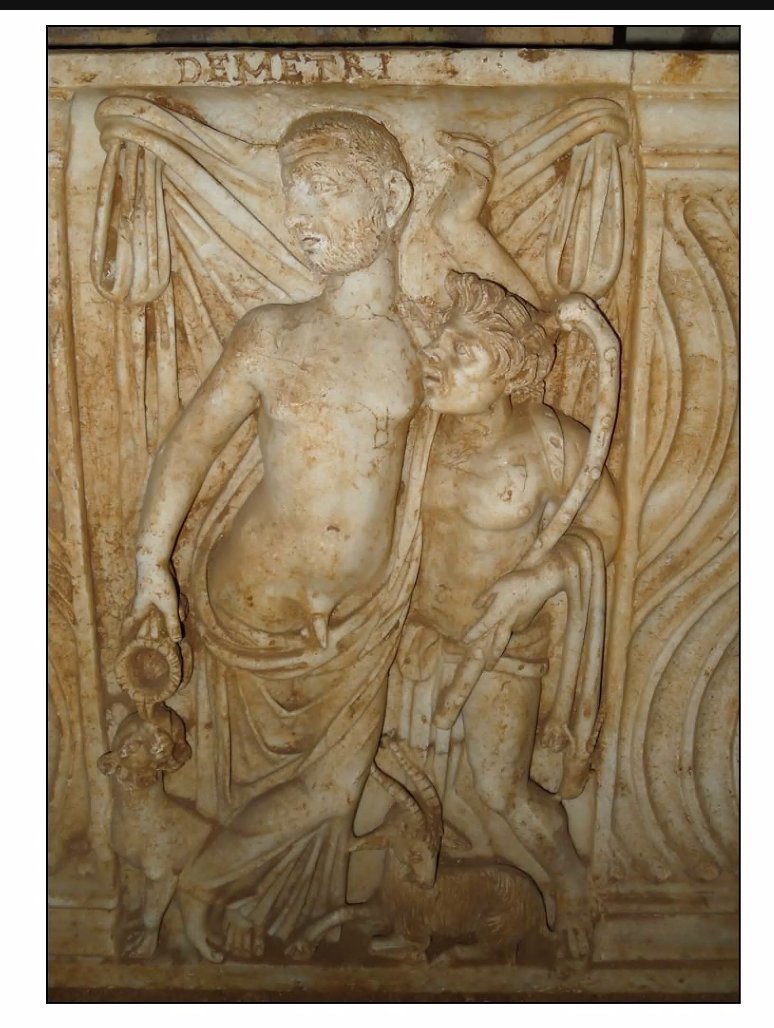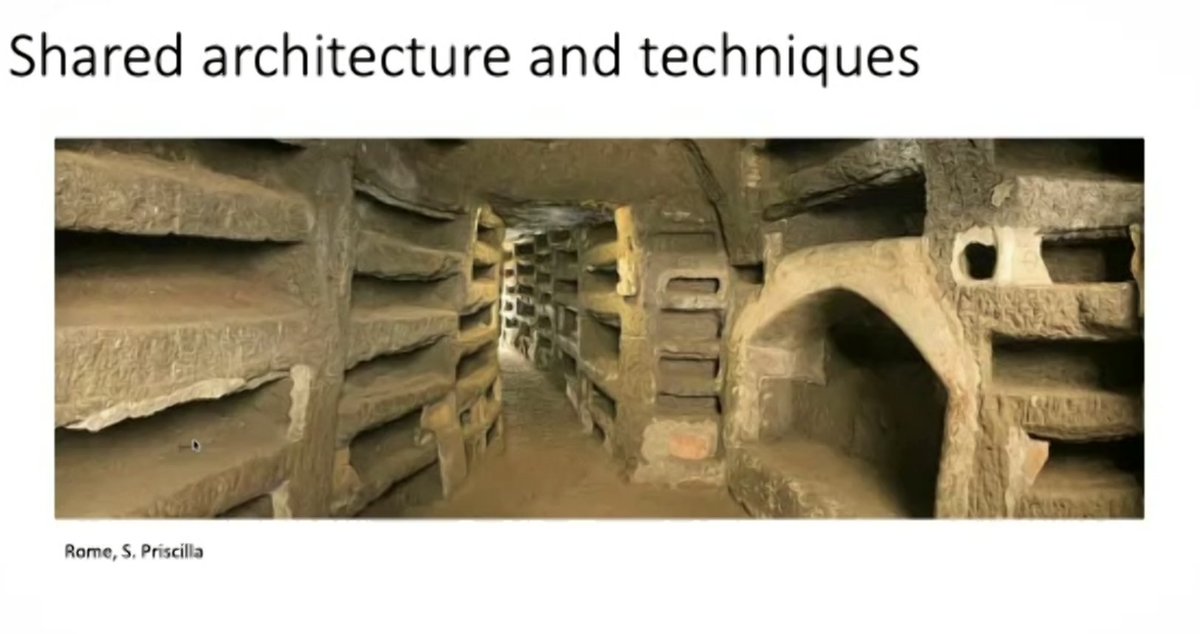
Prof. Vincenzo Fiocchi Nicolai of @unitorvergata on French historian Paul-Albert Février's studies of catacombs of #Rome & other physical contexts of #Christian burial: catacombs in particular a "singular novelty" in Late Ancient era.
#ClassicsTwitter

#ClassicsTwitter


Fiocchi Nicolai sees distinctions between hypogeal burial for intimate groups of people & open-ended gallery grids laid out w/option for safe & pragmatic expansion in successive phases. Was necessary to find solution for collective, extra-familial burial arrangements 



Fiocchi Nicolai evidences that different tombs of popes & others venerated by name by Christians in literature of era use same location "in Calixti, in Priscilla, in Praetextati" for different areas of a cemetery, not seen as separate parts. "Incontestable" coemeterium means all. 

in one of earliest collective cemeteries, Catacombs "of Novatian" (modernn name), inscriptions in situ are dated, mid-3d c., also in other areas of Mediterranean, epigraphic testimonies of Christians as populus Christi 



Fiocchi Nicolai identifies recent studies that state differently, especially from "the Anglo-Saxon world" (I do wish he'd stop using term, many non-Anglos employ English now in publications). Point of contention: evidence of mix of Christians, Jews, & others in catacombs of #Rome 



While Eric Rebillard apparently conceded #Rome's catacombs were "exceptional" case in collective organization, others, according to Fiocchi Nicolai, see a "systematic" presence of pagans in catacombs, making case, however, from deconstructive interpretations of evidence 



In Fiocchi Nicolai's view, almost at the level of propaganda is a recent book by American historian Nicola Denzey Lewis, example, he states, of research a priori that uses evidence in superficial, impressionistic, & even sensational manner, w/o considering "globality" of design. 

Fiocchi Nicolai recommends scholars spend time to conduct comparative & extensive research, taking in details both monumental & individual, including typological distinctions of burials.
Fiocchi Nicolai has also touched upon many of these same points in English in "On Fr. Umberto M. Fasola, Scholar of Ancient Christian Cemeteries, the Origins of the Catacombs, and their typological characteristics n RACr 94, 2018, pp. 99-137): academia.edu/43201653/On_Fr…
@threadreaderapp unroll
• • •
Missing some Tweet in this thread? You can try to
force a refresh






